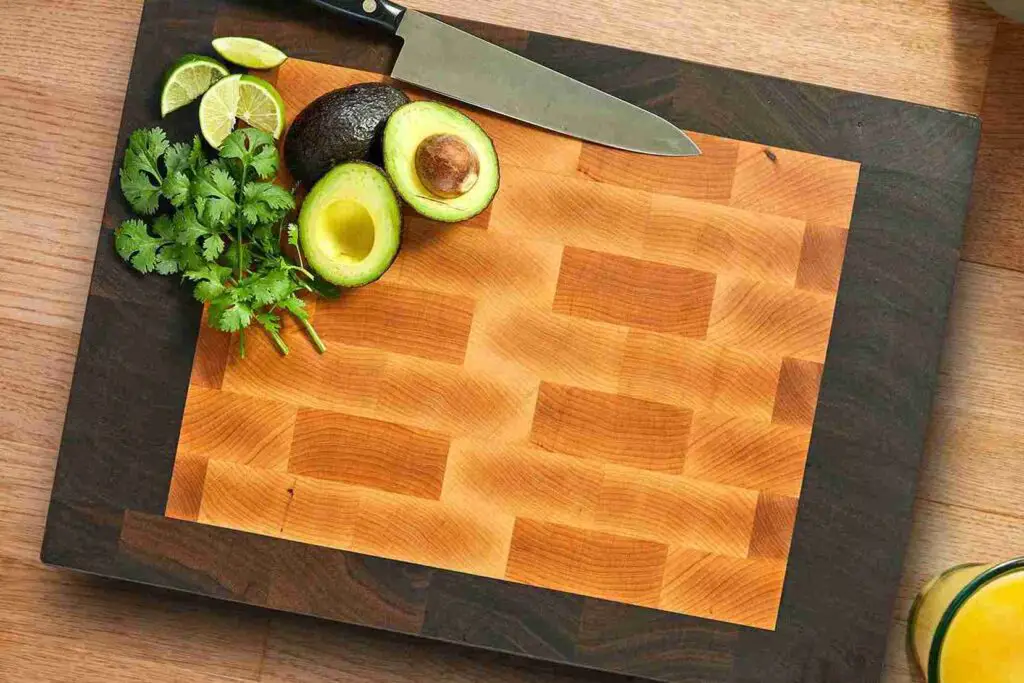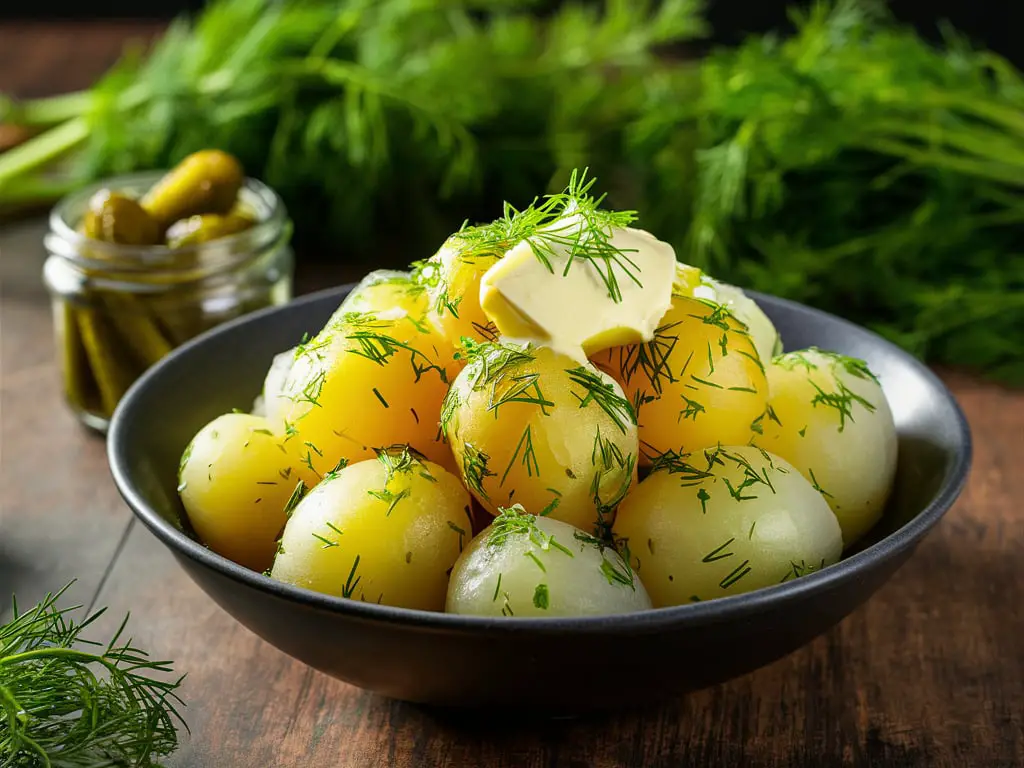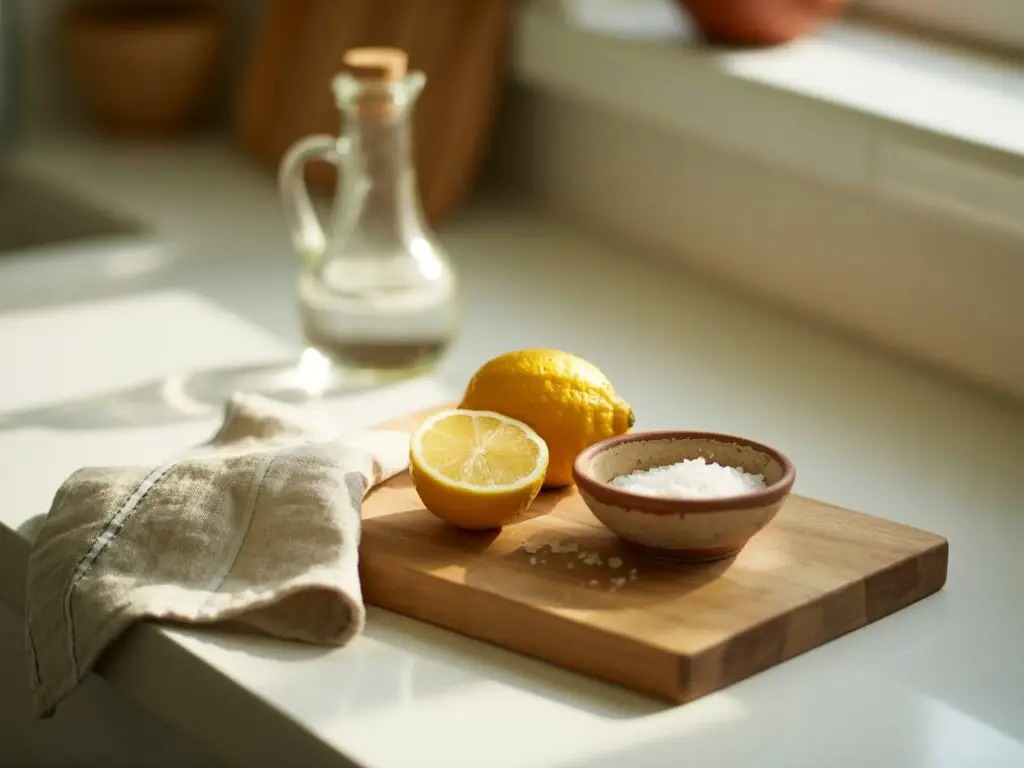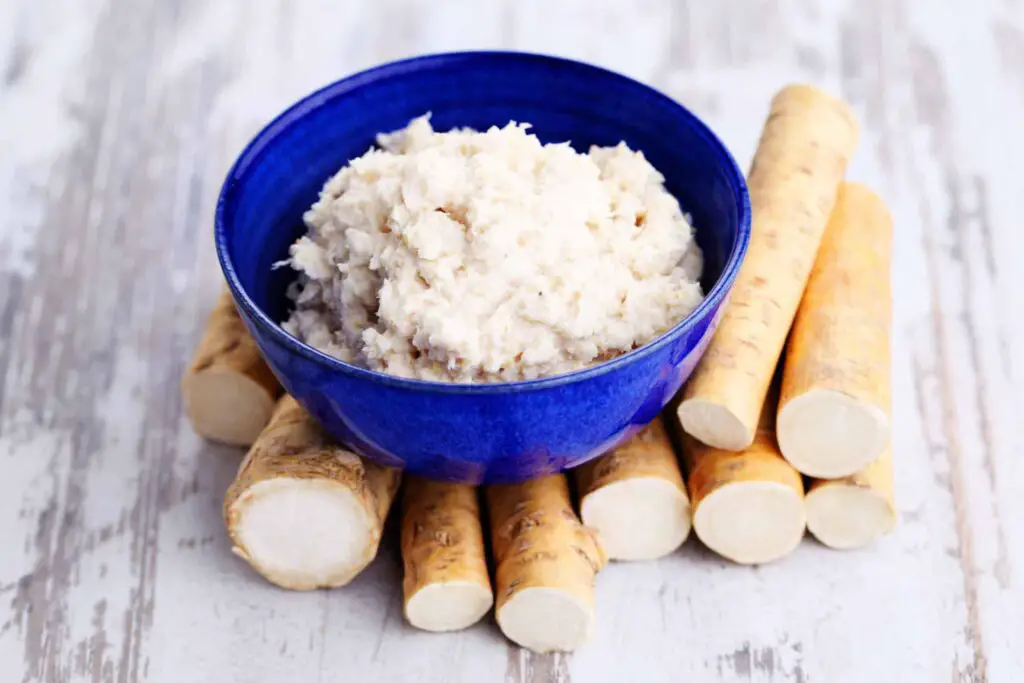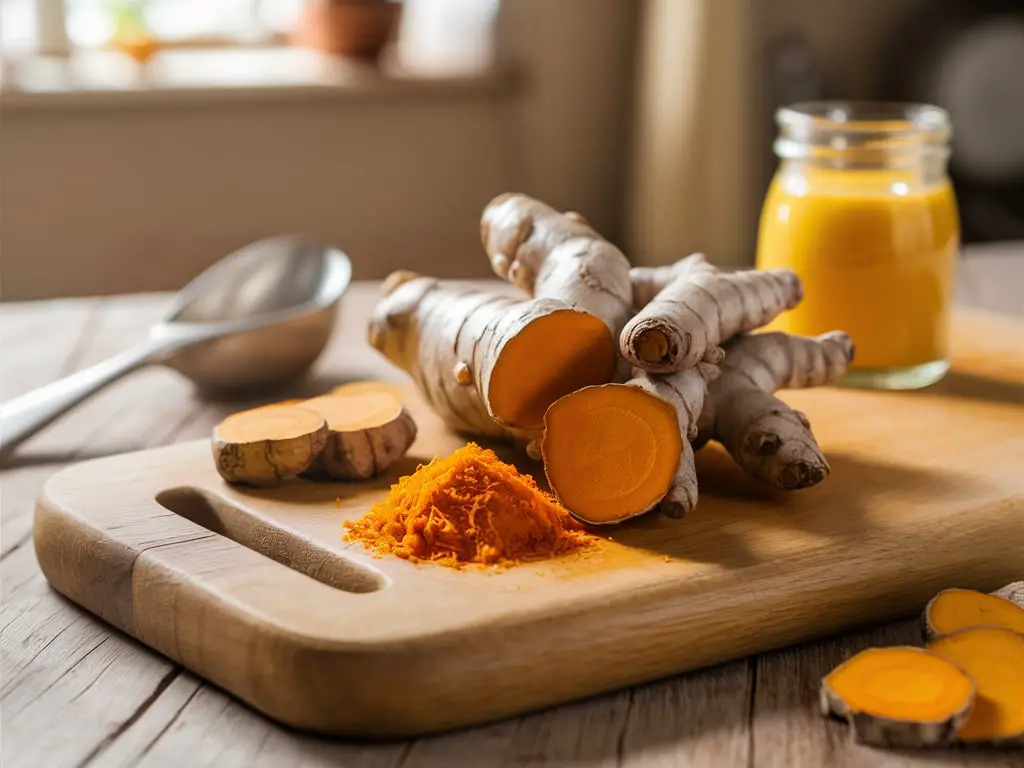5 Best Wooden Cutting Boards for Home Cooks

When I first started cooking regularly, I made the mistake of buying a flimsy plastic cutting board. Within weeks, it was covered in scratches, and my knives felt duller than ever. That’s when I realized the value of a good wooden cutting board. Not only does it protect your knives, but it also looks beautiful on your countertop and can last for years if cared for properly.
I’ve tested and used different boards over time—some cheap, some pricey, and some right in the middle. Today, I’m sharing my picks for the 5 best wooden cutting boards that stood out for durability, knife-friendliness, and overall feel in the kitchen.
Comparison Table: Best Wooden Cutting Boards
| Cutting Board | Best For | Price Range | Pros | Cons |
|---|---|---|---|---|
| The Boardsmith Maple End-Grain | Overall quality & durability | $$$ (Premium) | Gentle on knives, lasts for years, excellent craftsmanship | Heavy, harder to clean in small sinks |
| Brooklyn Butcher Blocks End-Grain Cherry | Craftsmanship & aesthetics | $$$ (Premium) | Rich cherry tone, gentle on knives, customizable | Softer than maple, minor blemishes |
| Ironwood Gourmet Acacia | Budget-friendly durability | $$ (Mid-Budget) | Affordable, lightweight, stylish look | Slightly harder on knives, shows scratches |
| Yes4All Acacia Cutting Board | Affordable everyday use | $ (Budget) | Sturdy, doesn’t slide, good backup option | Rough edges, juice groove reduces space |
| Williams Sonoma Larch Wood | Mid-range design & performance | $$ (Mid-Priced) | Beautiful swirled grain, light but sturdy, gentle on knives | More seams = potential splitting, minor staining |
1. The Boardsmith Maple End-Grain Cutting Board (Best Overall)
If I could recommend just one cutting board for someone who loves to cook, it would be this one. The end-grain maple design feels like cutting on tiny bristles—your knife slides in, and the wood fibers close back up. This not only protects your knife edge but also keeps the board looking smooth over time.
It’s heavy, sturdy, and clearly crafted with care. Mine has lasted for years without warping or splitting, and a little mineral oil keeps it looking brand new. It is on the pricey side, but I see it as an investment piece that will outlive a drawer full of plastic boards.
2. Brooklyn Butcher Blocks End-Grain Cherry Board (Great Craftsmanship)
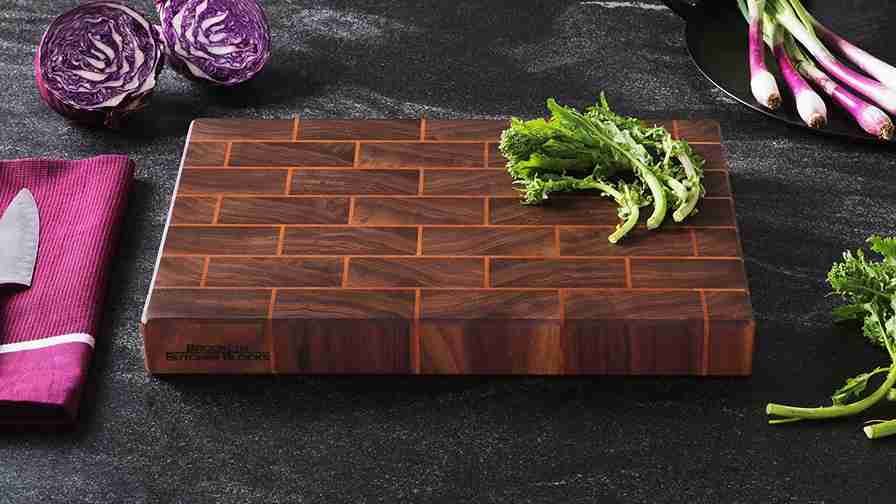
This cherry wood board is a close runner-up. I love its rich, reddish tone and how gentle it is on knives. During testing, it barely picked up scratches, even after slicing through a crusty loaf with a serrated knife.
It’s a bit softer than maple, but still durable. I also like that you can customize it with handles or juice grooves if you want extra features. The finish isn’t as buttery smooth as The Boardsmith, but it’s still a beautiful, reliable board that feels like it belongs in a serious cook’s kitchen.
3. Brooklyn Butcher Blocks End-Grain Cherry Board (Best Budget Pick)
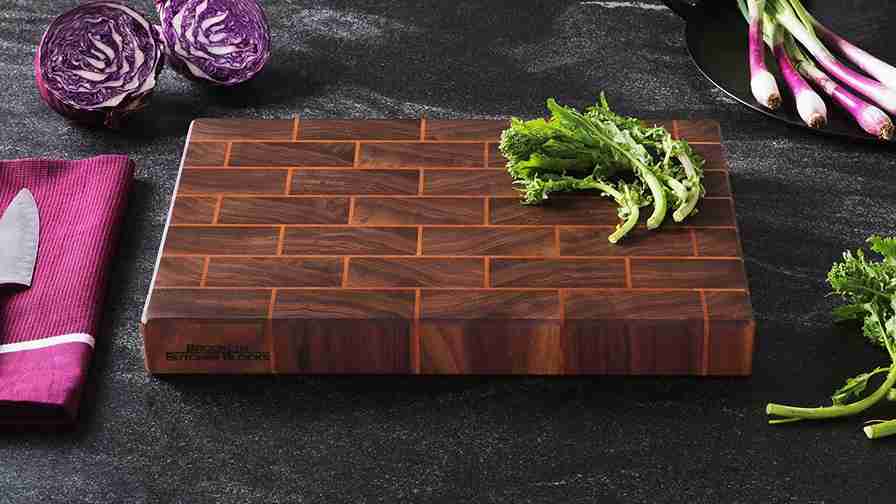
Not everyone wants to spend hundreds of dollars on a cutting board, and that’s where this one shines. The acacia wood gives it a gorgeous dark look, and at under $100, it’s affordable without feeling flimsy.
It’s lighter and thinner than premium boards, which makes it easier to move around and clean in the sink. The only trade-off? Acacia has more natural silica, which means it can be a little harder on knives compared to maple or walnut. Still, in my use, it didn’t dull my knives noticeably, and it’s held up well for the price.
4. Yes4All Acacia Cutting Board (Solid Budget Alternative)
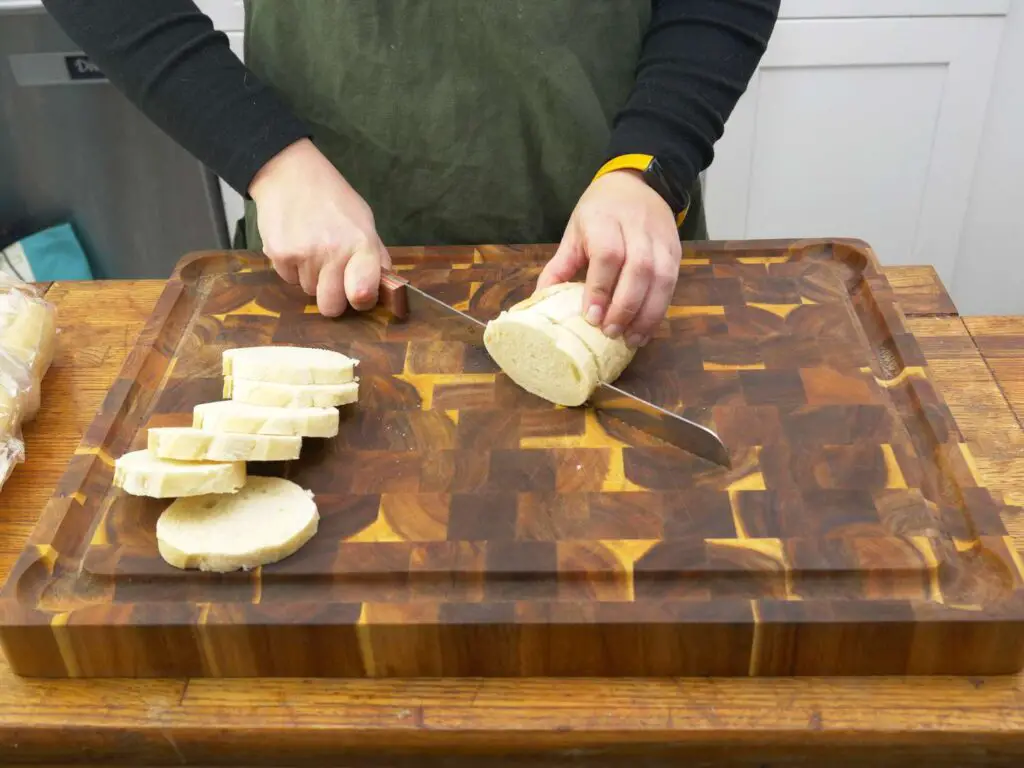
If you want to spend even less, this board is a decent choice. It’s sturdy, has good weight, and doesn’t slide around when you’re chopping. The surface is smooth, and while it shows scratches a bit more than pricier boards, it still gets the job done.
It’s not as polished in finish, and the juice groove eats up some space, but if you just need an affordable wooden board that feels solid, this one is worth considering. I like using mine as a backup or when I’m prepping messy foods like melons.
5. Williams Sonoma Larch Wood Original Board (Best Mid-Priced Option)
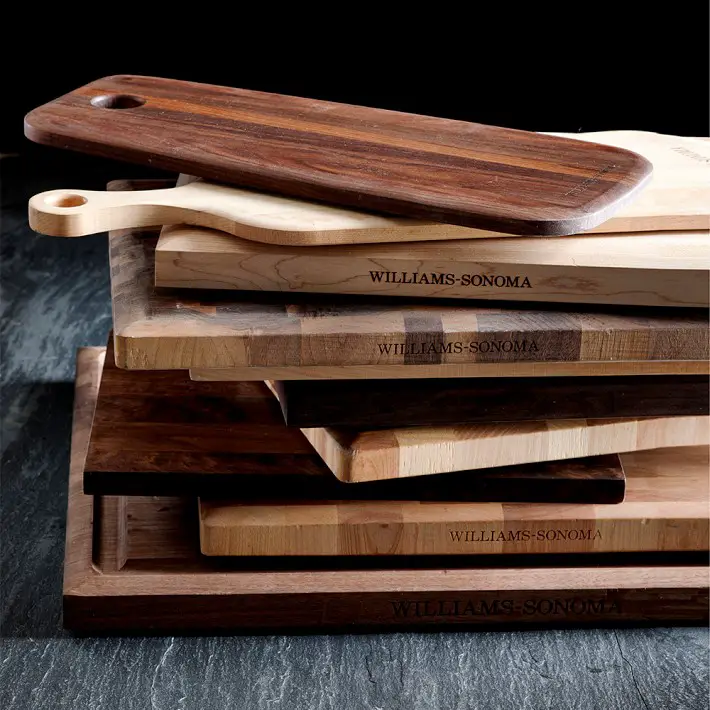
This board always gets compliments when guests see it—the swirling grain pattern is stunning. But it’s not just pretty; it’s also sturdy, smooth, and gentle on knives. After weeks of chopping, mine only showed minor scratches.
It’s lighter than some of the chunkier maple boards, which makes it easier to handle. The downside is that it’s made with smaller end-grain pieces, which means more seams that could split over time. Still, for a mid-range price, it balances looks and performance really well.
Final Thoughts
A wooden cutting board isn’t just about function—it becomes part of your kitchen routine. Whether you want a long-term investment like The Boardsmith, a budget-friendly acacia board, or a mid-priced beauty like the Williams Sonoma Larch, there’s a good option for every cook.
For me, the right board is one that feels stable under my knife, protects my blades, and looks nice enough to leave out on the counter. Treat it with care—wash, dry, and oil it regularly—and a good wooden board will last for years, maybe even decades.

